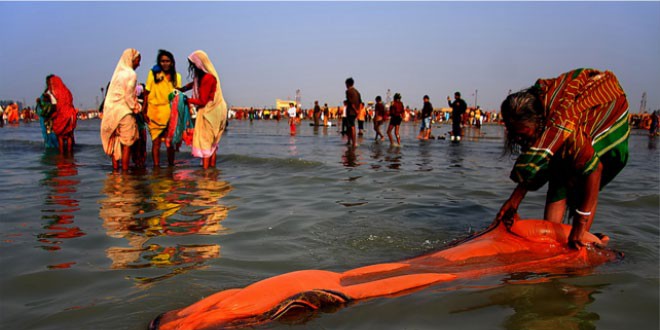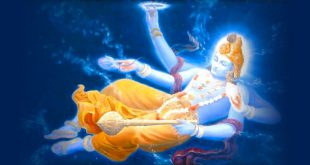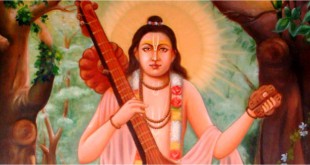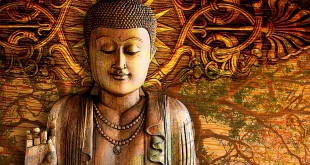Makar Sankranti is a major harvest festival celebrated in various parts of India. According to the lunar calendar, when the sun moves from the Tropic of Cancer to the Tropic of Capricorn or from Dakshinayana to Uttarayana, in the month of Poush in mid-January, it commemorates the beginning of the harvest season and cessation of the northeast monsoon in South India. The movement of the earth from one zodiac sign into another is called Sankranti and as the Sun moves into the Capricorn zodiac known as Makar in Hindi, this occasion is named as Makar Sankranti in the Indian context. It is one of the few Hindu Indian festivals which are celebrated on a fixed date i.e. 14th January every year.
Makar Sankranti Festival Information:
Makar Sankranti, apart from a harvest festival is also regarded as the beginning of an auspicious phase in Indian culture. It is said as the ‘holy phase of transition’. It marks the end of an inauspicious phase which according to the Hindu calendar begins around mid-December. It is believed that any auspicious and sacred ritual can be sanctified in any Hindu family, this day onwards. Scientifically, this day marks the beginning of warmer and longer days compared to the nights. In other words, Sankranti marks the termination of winter season and beginning of a new harvest or spring season.
All over the country, Makar Sankranti is observed with great fanfare. However, it is celebrated with distinct names and rituals in different parts of the country. In the states of northern and western India, the festival is celebrated as the Sankranti day with special zeal and fervor. The importance of this day has been signified in the ancient epics like Mahabharata also. So, apart from socio-geographical importance, this day also holds a historical and religious significance. As, it is the festival of Sun God and he is regarded as the symbol divinity and wisdom, the festival also holds an eternal meaning to it.
The northward movement of the sun begins on this day. The period from Karkasankrant (the passage of the sun into the zodiac sign of Cancer) to Makar Sankranti is called the Dakshinayan. A person who dies in the Dakshinayan period has a greater chance of going to Yamalok (southward region), than one who dies during Uttarayana (northward revolution).
Importance from the point of view of spiritual practice: On this day, from sunrise to sunset, the environment has more Chaitanya (Divine consciousness); hence those doing spiritual practice can benefit from this Chaitanya.
Makar Sankranti: Methods of celebration
Benefit of highest merit acquired by a Holy dip on the day of Makar Sankranti: The time from sunrise to sunset on Makar Sankranti is auspicious. A Holy dip during this period carries special significance. Those who take a Holy dip in the rivers Ganga, Yamuna, Godavari, Krushna and Kaveri at the Holy places situated on the banks of these rivers acquire the highest merit.
Offering: Importance of making an offering during an auspicious period: The period from Makar Sankranti to Rathsaptami is an auspicious period. Any donation and meritorious deeds in this period prove more fruitful.
Substances offered: An offering of new vessels, clothing, food, sesame seeds, pot of sesame seeds, jaggery, a cow, a horse, gold or land should be made depending on the capability. On this day, married women also make some offering. They take things from unmarried girls and give them sesame seeds and jaggery in return. Married women organize a ceremony of haldi-kumkum (applying vermilion and turmeric to the forehead) and gift articles to other married women.
Importance of haldi-kumkum ceremony performed by married women on Makar Sankranti
Performing haldi-kumkum (Turmeric powder and saffron) ceremony is in a way invoking the waves of dormant Adi-shakti in the Universe to get activated. This helps in creating impression of Sagun (Materialized) devotion on the mind of an individual and enhances his bhav (Spiritual emotion) unto God. Five steps in haldi-kumkum ceremony:
- Applying haldi-kumkum: Applying haldi-kumkum to a Suvasini (A married woman whose husband is alive) activates the dormant Principle of Sri Durgadevi in her and bestows well-being to the applier Suvasini.
- Applying perfume: Fragrant particles emitting from the perfume please the Principle of the Deity and bestow well-being to the applier Suvasini within a shorter period.
- Sprinkling rose-water: The fragrant waves emitted by the rose-water activate the waves of the Deity and purifies the environment, and the Suvasini who sprinkles it gets greater benefit of the activated Sagun Principle of the Deity.
- Offering a gift: A gift offered is always supported by the end of the pallu of the sari. Offering a gift to another Suvasini amounts to surrendering to the divinity in her, through sacrifice of body, mind and wealth. Giving support of the end of pallu of the sari means leaving attachment to even the clothes worn on the body and thus learning to overcome body awareness. Since the period of Sankranti is favorable for sadhana, a gift given during this period pleases the Deities quickly and they bestow the donor Suvasini with the desired fruit.
What should be gifted on Makar Sankranti?
Instead of gifting non-dharmik commodities like soap, plastic items etc., objects complementary to Spirituality and are indicators of a married life, such as incense-sticks, ubtan (Fragrant herbal powder), religious and Holy texts, pictures of Deities, CDs on spiritual topics etc. should be gifted.
Small mud pots: The festival of sankranti requires small mud pots called sugad (in the Marathi language). Vermilion and turmeric powder is applied to the pots and a thread is tied to them. They are filled with carrots, jujube fruits, sugarcane pieces, pods, cotton, chickpeas, sesame seeds with jaggery, vermilion, turmeric etc. Five pots are placed on a wooden seat, rangoli is drawn around the seat and worshiped. Of these, three are gifted to married women, one is offered to the tulsi plant and one is retained.
Use of sesame seeds: Maximum use of sesame seeds is made during sankrant festival. For example, bathing with water containing sesame seeds and eating and distributing tilgul (a sweet made from sesame seeds), offering sesame to Brahmans, lighting lamps of sesame oil in a temple of Lord Shiva and performing pitrushraddh (rite for the departed ancestors) in which an offering of sesame seeds is made.
Importance of sesame seeds: Using sesame seeds eliminates sins: On this day those who apply sesame seed oil and ubtan to the body, bathe in water mixed with sesame seeds, drink water mixed with sesame seeds, perform a sacrificial fire, make an offering of sesame seeds and make similar use of sesame seeds, are liberated of all sins.
Importance according to Ayurveda: Since sankrant falls in winter, consuming sesame seeds is beneficial.
Importance according to Spirituality: Since sesame seeds have a greater ability to absorb and emit sattva frequencies, consuming tilgul helps improve spiritual practice. Distributing tilgul to one another results in an exchange of the sattva component. Using sesame seeds in shraddh prevents demons from bringing obstacles during the rite.
Makar Sankranti Culture & Festivities:
This festival is celebrated differently in different parts of the country.
Uttar Pradesh: In Uttar Pradesh, Sankrant is called ‘Khichiri’. Taking a dip in the holy rivers on this day is regarded as most auspicious. A big one-month long ‘Magha-Mela’ fair begins at Prayag (Allahabad) on this occasion. Apart from Triveni, ritual bathing also takes place at many places like Haridvar and Garh Mukteshwar in Uttar Pradesh, and Patna in Bihar.
Bengal: In Bengal every year a very big Mela is held at Ganga Sagar where the river Ganga is believed to have dived into the nether region and vivified the ashes of the sixty thousand ancestors of King Bhagirath. This mela is attended by a large number of pilgrims from all over the country.
Tamil Nadu: In Tamil Nadu Sankranti is known by the name of ‘Pongal’, which takes its name from the surging of rice boiled in a pot of milk, and this festival has more significance than even Diwali. It is very popular particularly amongst farmers. Rice and pulses cooked together in ghee and milk is offered to the family deity after the ritual worship. In essence in the South this Sankranti is a ‘Puja’ (worship) for the Sun God.
Andhra Pradesh: In Andhra Pradesh, it is celebrated as a three-day harvest festival Pongal. It is a big event for the people of Andhra Pradesh. The Telugus like to call it ‘Pedda Panduga‘ meaning big festival. The whole event lasts for four days, the first day Bhogi, the second day Sankranti, the third day Kanuma and the fourth day, Mukkanuma.
Karnataka: In Karnataka, the festival is marked by visiting one’s friends and relatives to exchange greetings, and by the preparation of a dish called Ellu (made with sesame seeds, coconuts, sugar blocks, etc). A common custom found across Karnataka is the exchange of sugarcane pieces and Ellu with one’s neighbors, friends and relatives. In Karnataka, Pongal is known as ‘Sankranti’, and cows and bullocks are gaily decorated and fed ‘Pongal’- a sweet preparation of rice. Special prayers are offered. In the evening, the cattle are led out in procession to the beat of drums and music. In the night a bonfire is lit and the animals are made to jump over the fire.
Makar Sankranti is marked by men, women and children wearing colorful clothing; visiting near and dear ones; and exchanging pieces of sugarcane, a mixture of fried til, molasses, pieces of dry coconut, peanuts and fried gram. On this auspicious day, people in Karnataka distribute Yellu and bella (Sesame seeds and Jaggery) and greet with the words ” “Ellu bella thindu, Olle Maathu Aadu” (Eat sesame seeds and speak only good). The significance of this exchange is that sweetness should prevail in all the dealings.
Maharashtra: In Maharashtra – on the Sankranti day people exchange multi-colored tilguds made from til (sesame seeds) and sugar and til-laddus made from til and jaggery. Til-polis are offered for lunch. While exchanging tilguls as tokens of goodwill people greet each other saying – ‘til-gul ghya, god god bola’ meaning ‘accept these tilguls and speak sweet words’. The under-lying thought in the exchange of tilguls is to forget the past ill-feelings and hostilities and resolve to speak sweetly and remain friends. This is a special day for the women in Maharashtra when married women are invited for a get-together called ‘Haldi-Kumkum’ and given gifts of any utensil, which the woman of the house purchases on that day. Hindus wear ornaments made of ‘Halwa’ on this day.
Gujarat: In Gujarat – Sankrant is observed more or less in the same manner as in Maharashtra but with a difference that in Gujarat there is a custom of giving gifts to relatives. The elders in the family give gifts to the younger members of the family. The Gujarati Pundits on this auspicious day grant scholarships to students for higher studies in astrology and philosophy. This festival thus helps the maintenance of social relationships within the family, caste and community. Kite flying has been associated with this festival in a big way. It has become an internationally well-known event.
Punjab: In Punjab where December and January are the coldest months of the year, huge bonfires are lit on the eve of Sankrant and which is celebrated as “LOHRI“. Sweets, sugarcane and rice are thrown in the bonfires, around which friends and relatives gather together. The following day, which is Sankrant, is celebrated as MAGHI. The Punjabi’s dance their famous Bhangra dance till they get exhausted. Then they sit down and eat the sumptuous food that is specially prepared for the occasion.
Kerala: The 40 days anushthana by the devotees of Ayyappa ends on this day in Sabarimala with a big festival.
Bundelkhand: In Bundelkhand and Madhya Pradesh this festival of Sankrant is known by the name ‘Sakarat’ and is celebrated with great pomp & merriment accompanied by lot of sweets.
Tribals of Orissa: Many tribals in our country start their New Year from the day of Sankrant by lighting bonfires, dancing and eating their particular dishes sitting together. The Bhuya tribals of Orissa have their Maghyatra in which small home-made articles are put for sale.
Assam: In Assam, the festival is celebrated as Bhogali Bihu.
Coastal Region: In the coastal regions, it is a harvest festival dedicated to Indra.
मकर संक्रांति क्यों मनाते हैं: जानें धार्मिक और वैज्ञानिक कारण
सूर्य जब एक राशि से दूसरी राशि में प्रवेश करते हैं तो ज्योतिष में इस घटना को संक्रांति कहते हैं। मकर संक्रांति (Makar Sankranti) के अवसर पर सूर्य का मकर राशि में प्रवेश होता है। एक संक्रांति से दूसरी संक्रांति के बीच का समय ही सौर मास कहलाता है। पौष मास में सूर्य उत्तरायण होकर मकर राशि में प्रवेश करते हैं तो इस अवसर को देश के अलग-अलग प्रांतों में अलग-अलग त्योहार के रूप में मनाते हैं। मकर संक्रांति का त्योहार उत्तर भारत में हर साल 14 जनवरी को मनाया जाता है।
मकर संक्रांति को खुलता है स्वर्ग का द्वार
इस दिन से धरती पर अच्छे दिनों की शुरुआत मानी जाती है इसकी वजह यह है कि सूर्य इस दिन से दक्षिण से उत्तरी गोलार्ध में गमन करने लगते हैं। इससे देवताओं के दिन का आरंभ होता है। धार्मिक मान्यताओं के अनुसार मकर संक्रांति के दिन स्वर्ग का दरवाजा खुल जाता है। इसलिए इस दिन किया गया दान पुण्य अन्य दिनों में किए गए दान पुण्य से अधिक फलदायी होता है।
भीष्म पितामाह ने चुना था आज का दिन
मकर संक्रांति के दिन शुद्ध घी एवं कंबल का दान मोक्ष की प्राप्ति करवाता है। महाभारत काल में भीष्म पितामह ने अपनी देह त्यागने के लिये मकर संक्रांति का ही चयन किया था। गीता में बताया गया है कि जो व्यक्ति उत्तरायण में शुक्ल पक्ष में देह का त्याग करता है उसे मुक्ति मिल जाती है। मकर संक्रांति से सूर्य उत्तरायण हो जाते हैं इसलिए इस पुण्यदायी दिवस को हर्षोल्लास से लोग मनाते हैं।
पुराणों में मकर संक्रांति की कथा
श्रीमद्भागवत एवं देवी पुराण के मुताबिक, शनि महाराज का अपने पिता से वैर भाव था क्योंकि सूर्य देव ने उनकी माता छाया को अपनी दूसरी पत्नी संज्ञा के पुत्र यमराज से भेद-भाव करते देख लिया था, इस बात से नाराज होकर सूर्य देव ने संज्ञा और उनके पुत्र शनि को अपने से अलग कर दिया था। इससे शनि और छाया ने सूर्य देव को कुष्ठ रोग का शाप दे दिया था।
मकर संक्रांति से जुड़ा है सूर्य शनि का वरदान
पिता सूर्यदेव को कुष्ठ रोग से पीड़ित देखकर यमराज काफी दुखी हुए। यमराज ने सूर्यदेव को कुष्ठ रोग से मुक्त करवाने के लिए तपस्या की। लेकिन सूर्य ने क्रोधित होकर शनि महाराज के घर कुंभ जिसे शनि की राशि कहा जाता है उसे जला दिया। इससे शनि और उनकी माता छाया को कष्ठ भोगना पड़ रहा था। यमराज ने अपनी सौतेली माता और भाई शनि को कष्ट में देखकर उनके कल्याण के लिए पिता सूर्य को काफी समझाया। तब जाकर सूर्य देव ने कहा कि जब भी वह शनि के दूसरे घर मकर में आएंगे तब शनि के घर को धन-धान्य से भर देंगे। प्रसन्न होकर शनि महाराज ने कहा कि मकर संक्रांति को जो भी सूर्यदेव की पूजा करेगा उसे शनि की दशा में कष्ट नहीं भोगना पड़ेगा।
मकर संक्रांति का व्यवहारिक और वैज्ञानिक कारण
मकर संक्रांति का वैज्ञानिक कारण यह है कि इस दिन से सूर्य के उत्तरायण हो जाने से प्रकृति में बदलाव शुरू हो जाता है। ठंड की वजह से सिकुरते लोगों को सूर्य के उत्तरायण होने से शीत ऋतु से राहत मिलना आरंभ होता है। भारत एक कृषि प्रधान देश है जहां के पर्व त्योहार का संबंध काफी कुछ कृषि पर निर्भर करता है। मकर संक्रांति ऐसे समय में आता है जब किसान रबी की फसल लगाकर खरीफ की फसल, धन, मक्का, गन्ना, मूंगफली, उड़द घर ले आते हैं। किसानों का घर अन्न से भर जाता है। इसलिए मकर संक्रांति पर खरीफ की फसलों से पर्व का आनंद मनाया जाता है।
 Kids Portal For Parents India Kids Network
Kids Portal For Parents India Kids Network








11 comments
Pingback: International Kite Festival Images: Uttarayan or Makar Sankranti - Kids Portal For Parents
Pingback: Makar Sankranti Images: Thanksgiving Sun God, Gangasagar - Kids Portal For Parents
Pingback: Makar Sankranti Customs & Traditions - Kids Portal For Parents
Pingback: Makar Sankranti Quotes For Students - Kids Portal For Parents
Pingback: Makar Sankranti Facebook Covers - Kids Portal For Parents
Pingback: Makar Sankranti Date & Significance of Uttarayana - Kids Portal For Parents
Pingback: Pongal Facebook Covers For Students - Kids Portal For Parents
Pingback: डोर का महत्व: शिष्य गुरु शास्त्रार्थ पर प्रेरणादायक हिंदी कहानी - Kids Portal For Parents
Pingback: When is Pongal festival? Harvest Festival - Kids Portal For Parents
Pingback: What is Significance of Pongal festival? - Kids Portal For Parents
Pingback: Assam readies for feasting festival Magh Bihu - Kids Portal For Parents